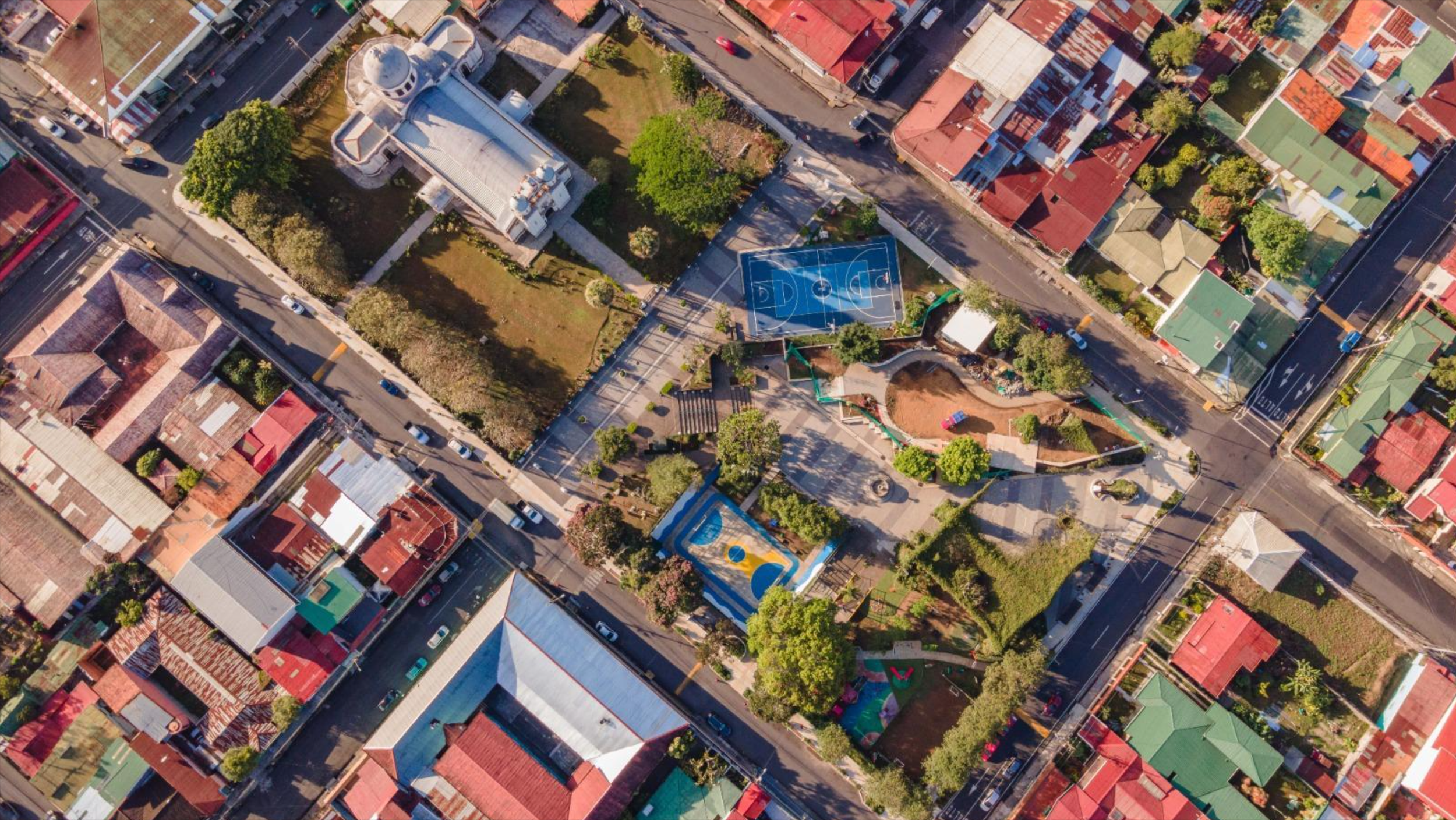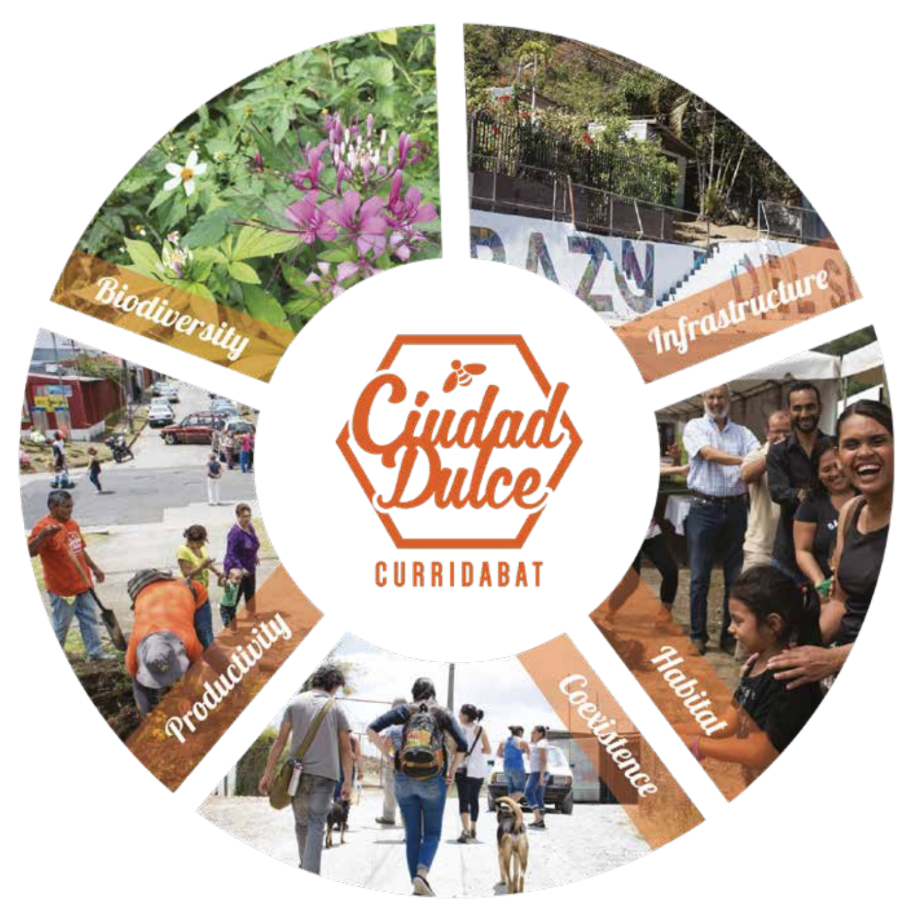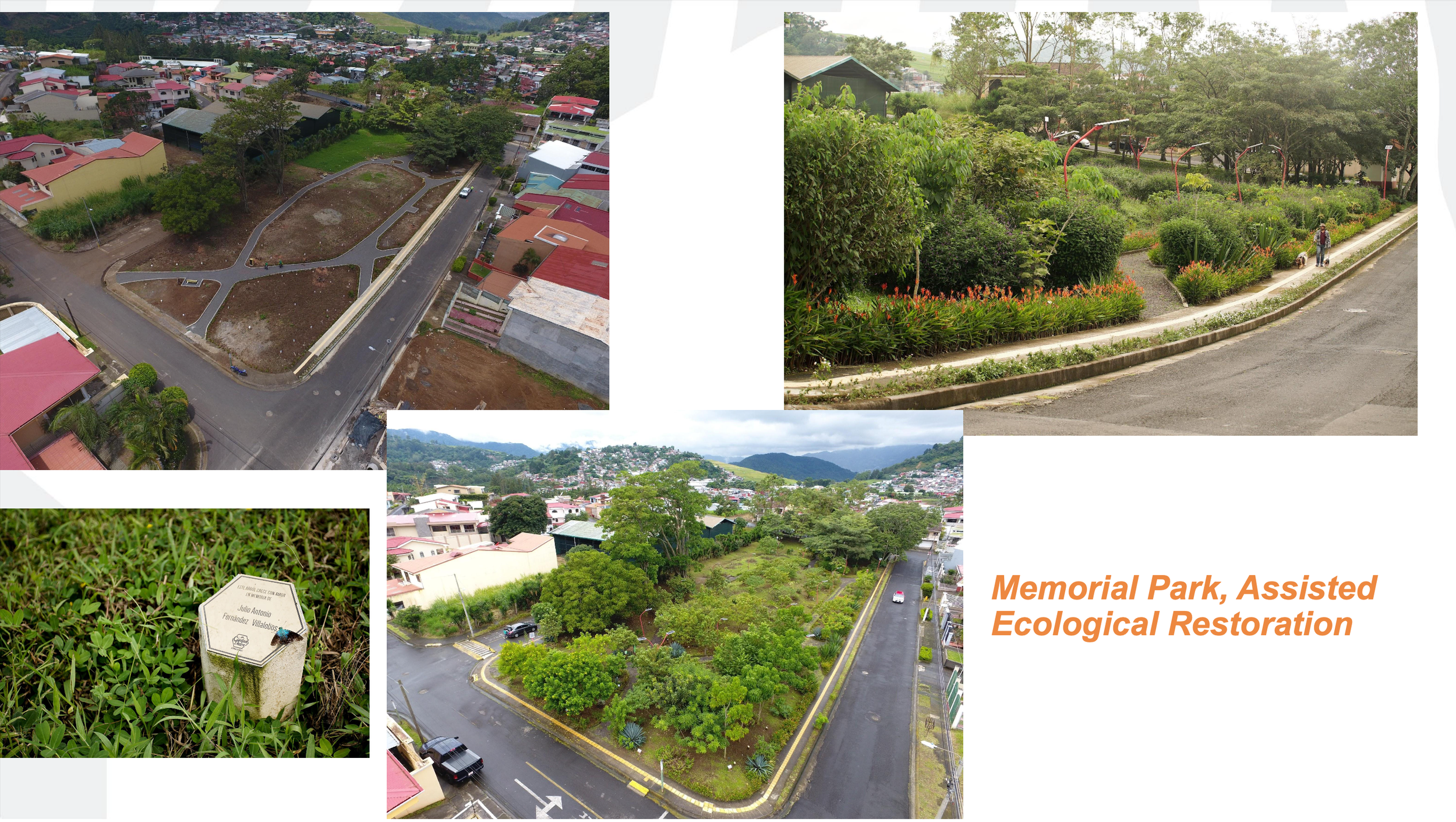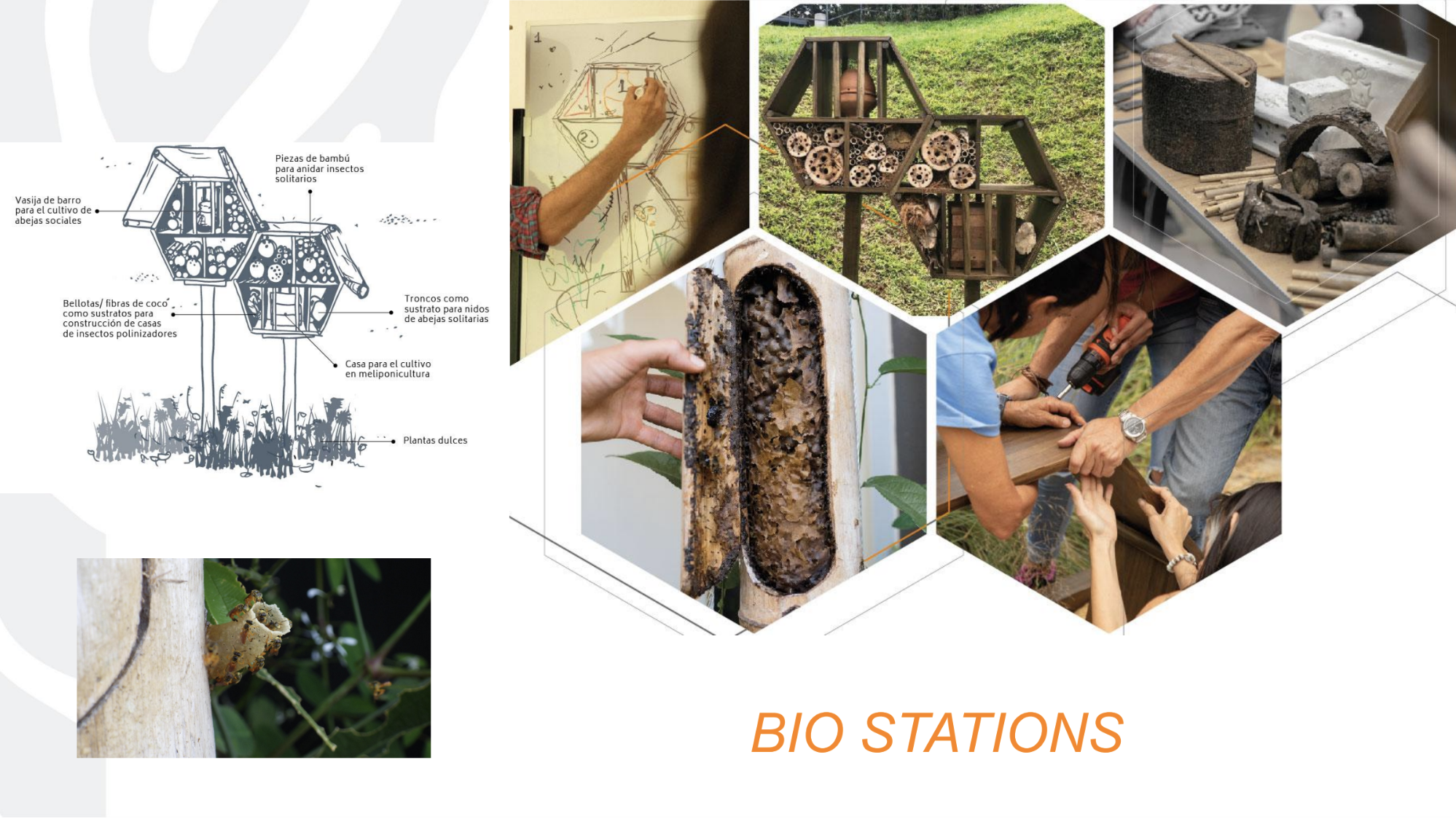Curridabat: Ciudad Dulce
Costa Rica has for long been a global environmental leader, implementing policies which have helped the country build its green reputation through pioneering programmes to promote forest and biodiversity conservation and reverse deforestation. One such pioneering programme is the award-winning Sweet City programme in the municipality of Curridabat, which since 2015 has taken a regenerative approach to its urban planning. Located within the Greater Metropolitan Area of central Costa Rica, with a population of approximately 70,000 people, Curridabat’s experience highlights the role that cities can play in unleashing the potential of regenerative design.
Curridabat’s Ciudad Dulce (Sweet City) initiative started around 2012/2013 when Mayor Edgar Mora began to ask his employees on a daily basis: “Who have you made happy today?” and “What made them happy?”. It was the starting point for a shift in perspective on what the role of government is and the development of a new vision for what progress in the municipality means. The new vision for Curridabat was created in a participatory way and a wide range of pilots were carried out to experiment with new ways of working. One of these pilots was Hola Mariola (‘Hello Bee’) which formed the foundation for what became the Sweet City programme and way of working.
The Sweet City Programme, which was officially launched in 2015, then formalised into the municipality’s 2017-2022 5-year plan and continued in the 2023-2027 plan, starts from the interconnectedness between humans and the living world around them. Within Sweet City’s vision, pollinators such as bees, butterflies and hummingbirds, as well as the plants and trees they are intimately linked to, along with all other organisms, are effectively recognised as citizens, with roles to play and rights to be upheld. Nature has been placed at the centre of urban design, overcoming the antagonism between city and nature that has characterised traditional urban development. Instead, inspiration is drawn from nature-based solutions and humans are explicitly seen as part of the natural world.
The multidimensional development vision centres around five dimensions:
Productivity: being able to generate own sources of energy and food
Coexistence: everybody integrating into the community, including members of nature
Habitat: citizens having a better life and equal conditions
Infrastructure: adapting infrastructure to nature
Biodiversity: letting nature express itself in the city
Seven overlapping experiences have been defined, encompassing the main elements to improve the quality of life for all of Curridabat’s residents, both human and non-human.
The raindrop’s experience: improvement of water management.
The earthworm’s experience: recovering soil health and promoting its self-regeneration.
The conscious eating experience: improving the availability of healthy foods and promoting conscious eating.
The access to desired destinations experience: steering public and private investment towards enhancement of urban mobility and accessibility.
The trust in the inhabited space experience: ensuring safe and inclusive spaces for all residents.
The mental health experience: promoting spaces for the enhancement of residents’ wellbeing.
The local governance experience: guiding governance and local government management to respond to local and global demands.
Starting from this framework
Starting from this framework, the city has created green corridors and increased urban vegetation, transforming streets and neighborhoods into interconnected bio-corridors. These corridors provide habitats for pollinators and improve ecological connectivity. Community planting events encourage residents to plant native flowers and trees, guided by the Sweet City Greenery Guide, which educates residents on suitable plants, their ecological roles, and care requirements.
The Spaces of Sweetness programme redesigns neighbourhoods to harmonise infrastructure with biodiversity. This involved participatory workshops with over 1,100 residents in 21 communities, focusing on collaborative urban design and land-use changes (e.g., converting industrial zones to mixed-use areas).
Investments have been made in sustainable drainage systems, riverfront parks, wetland creation, and spring water recovery, all serving as ecosystem-based disaster risk reduction and climate adaptation measures. In addition, public officials have worked with hydrologists to educate private companies on applying a water sensitive approach.
The Sweet City initiative also includes broader educational efforts. For example, residents are informed about plant selection, climate suitability, irrigation, and the ecological benefits of various species, fostering a culture of shared stewardship and mutual care for urban nature. In addition, a centre for Territorial Intelligence of Biodiversity has been launched, including a nursery and a data and learning centre. To improve social outcomes, ‘human development centres’ have been established that work alongside the National Education System to help overcome barriers for formal education and provide people with skills for becoming employed.
A learning mindset has also been a crucial part of the culture within the municipality itself. Curridabat is outward-looking and focuses on constant learning and development, for example through connections with the Singapore Innovation in Cities Centre, MIT Harvard, UN Habitat and the Urban Nature Index. In turn, Curridabat has not failed to inspire others: The Sweet City model has won a large number of awards for its innovative holistic urban planning and design contributing to wellbeing, including the 2016 Guangzhou International Award for Urban Innovation, the 2017 Le Monde Smart Cities Global Innovation Award for Citizen Participation and the 2020 Wellbeing Cities Award.
To learn more, see:
The Sweet City (article, 3 pages)
Curridabat: Sweet City (article, 19 pages)
Curridabat Ciudad Dulce Dimensión Biodiversidad Agua (video in Spanish with English subtitles, 2:30 mins)
Curridabat Ciudad Dulce Dimensión Productividad: la historia de Jenika Martínez (video in Spanish with English subtitles, 3:46 mins)
Image sources:
Ciudad Dulce framework: Curridabat Sweet City Magazine
All other images: Presentation Huberth Méndez Hernández, Advisor to the Mayor of Curridabat, to WEAll on 22 February 2024









